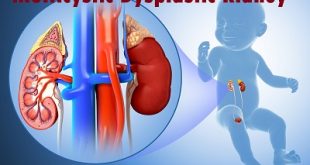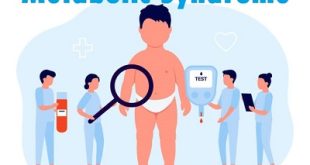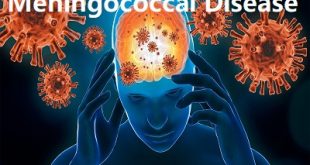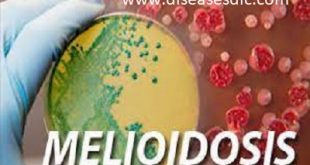Introduction
Marasmus is a type of protein-energy malnutrition that can affect anyone but is mainly seen in children. You can get marasmus if you have a severe deficiency of nutrients like calories, proteins, carbohydrates, vitamins, and minerals.
It is more common in developing countries, like in some areas of Asia and Africa. People in these nations are prone to having poor access to food, making it difficult to get enough nutrients. A risk of certain infectious diseases can cause marasmus if left untreated.
Pathophysiology of marasmus
In response to a low-calorie diet and low energy, the body responds in the following ways:
- Fat stores decrease up to 5% of the total body weight, and the extracellular water content of the body increases.
- Protein mass can decrease up to 30% in severe cases, and muscle fibers lose striations and become thin. Protein sparing mechanisms redirect amino acids to the vital organs.
- Hypothermia and hypoglycemia are more frequent in infants due to underdeveloped systems.
- Potassium deficiency of up to 15 mEq/kg results in hypotonia and impaired cardiac function.
- Elevated levels of intracellular sodium are present in muscles, brain, and blood cells.
- Metabolic adaptations in marasmus are like those in starvation.
- Basal metabolic rate decreases. The energy is diverted from muscles to the vital organs. Muscle loss is a result of decreased energy expenditure.
- Brain, skeleton, and kidney are preserved, whereas the liver, heart, pancreas, and digestive tract are affected first.
- Impaired glucose clearance in marasmus is due to compromised pancreatic beta-cell function.
- Secretory functions of mucosal surfaces are impaired along with decreased HCL production, and slow peristalsis.
- Adaptations are seen by thyroid hormones, insulin, and growth hormone.
- Thymus and all other T lymphocytes-producing tissues are affected, leading to an immunocompromised state.
- The brain is usually preserved during marasmus.
- Myofibril contractility is impaired.
Causes of Marasmus
As mentioned above, it is a nutrition deficiency disease and is mainly caused by:
- A severe deficiency of protein, vitamins, minerals, carbohydrates, and lipids.
- Viral, bacterial, and parasitic infections are also a major cause for this disorder.
- Children, older adults, and people with a weak immune system are more prone to marasmus.
Other causes of marasmus include:
- Poverty
- Starvation
- Famine or unavailability of food
- Lack of education about nutritional requirements.
- Intake of medicines that interfere with the absorption of nutrients.
Risk Factors of Marasmus
The risk factors for marasmus include:
- The people living in developing countries are more at risk of contracting marasmus.
- The famine and poverty struck areas have a larger percentage of children suffering from marasmus.
- If the infants are not breastfed by nursing mothers due to malnutrition, the risk of marasmus increases in children.
- Insufficient medical care and high disease rates are other reasons that increase the risk of marasmus in the population.
What are the symptoms of marasmus?
Symptoms of marasmus can range from mild to severe depending on the degree of malnutrition.
Common symptoms of marasmus
You may experience marasmus symptoms daily or just once in a while. At times any of these marasmus symptoms can be severe:
- Chronic or persistent diarrhea
- Distended abdomen
- Dizziness
- Emaciated appearance (unlike Kwashiorkor)
- Failure to achieve an appropriate weight to age/size
- Fatigue
Symptoms that might indicate a serious condition
Marasmus can be a serious condition that should be immediately evaluated by a health care provider. Seek immediate medical care if you, or someone you are with, have any of these serious symptoms including:
- Fainting or change in level of consciousness or lethargy
- Full or partial paralysis of the legs
- Loss of bladder or bowel control
- Prolonged vomiting or diarrhea
What are the potential complications of marasmus?
Complications related to marasmus or malnutrition are particularly serious in infants and young children. Lack of proper nutrition can lead to delays in physical and mental development. Complications of untreated marasmus can be serious and may include:
- Growth problems in children
- Joint deformity and destruction
- Loss of strength
- Loss of vision and blindness
- Organ failure or dysfunction
- Unconsciousness and coma
Diagnosis of marasmus
Lab values are taken to construct an appropriate treatment plan. Diagnosis is based on the following lab tests:
Blood glucose: Hypoglycemia is present if the level is lower than 3 mmol/L.
Examination of blood smears by microscopy or direct detection test: Presence of parasites is indicative of infection. Direct test is suitable but expensive.
Hemoglobin: A level lower than 40 g/L is indicative of severe anemia.
Urine examination and culture, Multistix: More than 10 leukocytes per high-power field is indicative of infection. Nitrites and leukocytes are tested on Multistix also.
Stool examination by microscopy: Parasites and blood are indicative of dysentery.
Albumin: Although not useful for diagnosis, it is a guide to prognosis; if albumin is lower than 35 g/L, protein synthesis is massively impaired.
HIV test: HIV test should not be routinely performed; if completed, it should be accompanied by counseling of the child’s parents and the result should be confidential.
Electrolytes: Measuring electrolytes is rarely helpful and it may lead to inappropriate therapy. Hyponatremia is a significant finding.
Imaging Studies
- Radiological examinations are rarely used for the same reasons as the laboratory examinations.
- Thoracic radiography can show a pulmonary infection despite lack of clinical signs, a primary tuberculosis lesion, cardiomegaly, or signs of rachitism.
Treatments
If severe marasmus is left untreated, it can cause death due to infection, electrolyte imbalance, heart failure, or hypothermia. Clinical treatment for marasmus includes the following steps:
Resuscitation
This step involves rehydration. This can be done by injecting a rehydrating solution into your vein or by orally feeding it to you. You may also be given antibiotics and medicines to treat underlying infections or diseases. Children are generally nursed in a warm room as they may be cold due to hypothermia.
Stabilization
This step involves gradual feeding to improve the levels of nutrients in your body. Your doctor will start by feeding you some milk or formula mixed with water. You will also receive a rehydrating solution containing electrolytes, amino acids, glucose, vitamins, and minerals by mouth or by vein.
Nutritional rehabilitation and follow-up
This step involves increasing your nutrient intake through a protein and energy-rich diet. The nutrients help your body repair and grow normally. It also helps you restore your optimal weight and height over time.
Once your symptoms have gone and you recover, you must stick to a balanced and nutrient-rich diet to stay healthy. This is also good advice to follow even if you aren’t at risk of malnutrition.
Prevention
- The best way to prevent marasmus is to have an adequate intake of calories and protein, preferably from a healthful, well-balanced diet.
- Foods rich in protein, such as skimmed milk, fish, eggs, and nuts are ideal for energy and growth, though any protein and calorie-rich food can be used to prevent marasmus, depending on what is available.
- Vegetables and fruits are essential for providing other nutrients and minerals and for preventing vitamin deficiencies. People can also take supplements, but they may be less effective than foods in delivering nutrients.
- A person who has recovered or is recovering from marasmus should take care to avoid complications, including dehydration and diarrhea.
Sanitation and hygiene
- Good sanitation and hygiene can play a role in marasmus, especially in places where there is not a regular supply of healthful food and clean water.
- Poor sanitation and hygiene can lead to infections that can worsen the symptoms of marasmus and other types of malnutrition and make it harder to recover.
- Cooking foods at high heat to destroy bacteria can help, as can freezing food and reheating it before eating.
- Boiling water before drinking, cooking, or bathing in areas where clean water is difficult to access is essential to prevent spreading waterborne diseases.
- Breastfeeding infants for 6 months can help protect them from nutritional difficulties, especially in places where food is short.
 Diseases Treatments Dictionary This is complete solution to read all diseases treatments Which covers Prevention, Causes, Symptoms, Medical Terms, Drugs, Prescription, Natural Remedies with cures and Treatments. Most of the common diseases were listed in names, split with categories.
Diseases Treatments Dictionary This is complete solution to read all diseases treatments Which covers Prevention, Causes, Symptoms, Medical Terms, Drugs, Prescription, Natural Remedies with cures and Treatments. Most of the common diseases were listed in names, split with categories.







